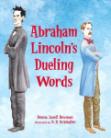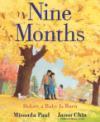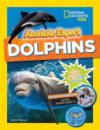
Yes. It’s April–National Poetry Month. Yes. It’s STEM Tuesday, and our theme this month is STEM in verse. Yes, our book list for the month includes books with poetry in them that are devoted to STEM themes.
But April is also the time when the National Science Teachers Association holds its annual conference, and the usual STEM Tuesday post in line for this week is all about connecting STEM books to the classroom. This year NSTA did something bold and exciting that is begging for recognition on this particular post, so that’s what this week is all about.
With J. Carrie Launius coordinating, NSTA invited a slew of nonfiction authors who write on STEM themes to participate in a 5-hour Linking Literacy event over two days–including 5 panel discussions, an opportunity for science educators and authors to mingle, and a book signing. Wow! As you can imagine, it was an opportunity to revel in creativity, caring, and collegiality. After a kick-off panel discussion featuring Steve Light, Melissa Stewart, Jennifer Swanson, Tracy Nelson Maurer, Shanda McCloskey and presiders Jacqueline Barber and E. Wendy Saul, four break-out panels delved into various themes.
There was a lot happening, often simultaneously. As I was a panelist and mixing-and-mingling author, I’m quite sure I missed a bunch, but still, I hope to share some of the take-aways from the conversations that took place informally and in some of the panels. I’ve tried to stick to the topics that most directly connect to bringing STEM books into the classroom.
STEM-themed biographies and scientist stories are for everyone. Laurie Wallmark,  biographer of women in STEM, reminded us that while it is great to share books about women, people of color, or other underrepresented groups in STEM with girls or kids of color only, it’s even better—and vitally important—that we share these stories with all children (and adults). It’s also key to break out of biographies and include stories for middle grade readers of scientists doing science. Need some examples? How about Patricia Newman’s Eavesdropping on Elephants or Mary Kay Carson’s The Tornado Scientist?
biographer of women in STEM, reminded us that while it is great to share books about women, people of color, or other underrepresented groups in STEM with girls or kids of color only, it’s even better—and vitally important—that we share these stories with all children (and adults). It’s also key to break out of biographies and include stories for middle grade readers of scientists doing science. Need some examples? How about Patricia Newman’s Eavesdropping on Elephants or Mary Kay Carson’s The Tornado Scientist?
Cross-disciplinary content is a natural part of many STEM books, especially those that feature topics that lure children in. Cheryl Bardoe, who writes picture book biographies, pointed out that individual STEM thinkers are specific to their place, time, and social contexts. Meanwhile, books about technology, including, for example, my Running on Sunshine or Jennifer Swanson’s Super Gear, root conceptual information in strong, motivating contexts. (It was wonderful to chat with teachers who appreciate the connections between their curriculum about “the sun” and solar energy technologies. This is just the type of connection-making that the NGSS emphasizes.)
biographies, pointed out that individual STEM thinkers are specific to their place, time, and social contexts. Meanwhile, books about technology, including, for example, my Running on Sunshine or Jennifer Swanson’s Super Gear, root conceptual information in strong, motivating contexts. (It was wonderful to chat with teachers who appreciate the connections between their curriculum about “the sun” and solar energy technologies. This is just the type of connection-making that the NGSS emphasizes.)
The rich visual imagery in STEM books can help readers connect to content and spark their interest and imagination. Of course, this is true of the illustrations in picture books, such as Steve Light’s Swap! But there’s more to look for. Keep your eyes peeled for primary source materials in picture books, such as photographs related to a remarkable discovery in Darcy Pattison’s Pollen. Keep in mind–as Jen Swanson pointed out–there’s also powerful imagery in books for middle grade readers.
It’s important to consider the whole range of roles that various STEM books can play in education.
E. Wendy Saul and Jacqueline Barber’s thoughtful questions and insightful reflections helped us consider some of these roles. Some books are great at fostering curiosity before a classroom unit on a given topic, while others are perfect resources to bring in after children have had a chance to try to make sense of their first-hand experiences and are looking for factual resources. STEM reading can inspire children to see themselves as competent STEM learners and future STEM professionals. Putting the right book in the hands of a particular child may be a pivotal moment in that child’s life, honoring and responding to his or her curiosity, interest, or moment of need.
Books and experience go hand-in-hand.

Educators check out simulated canine vision with Jodi Wheeler-Toppen (center).
Weaving my way through the tables during Linking Literacy’s informal time, I was struck by the many ways we authors link our books to opportunities for readers to experience the world. Of course, we generally provide teachers’ guides, but we also offer dynamic activities and interesting artifacts. I saw evidence of the added value of visiting with an author. For example, I showed visitors how I simulate stars orbiting mystery objects and how that relates to finding black holes. In addition, to extend the content of Dog Science Unleashed, Jodi Wheeler-Toppen provides customized Viewmasters that offer comparisons of human and canine vision. Meanwhile, Heather Montgomery shows off a fox pelt (among other artifacts) that she prepared as part of her research for Something Rotten. Truly, STEM authors can bring their own brand of multi-dimensional learning experiences and inspiration to the NGSS’s emphasis on 3D learning.
The STEM stories we share are a powerful aspect of creating a culture that honors STEM literacy. Do you have a story to share—some way in which you have used a STEM book in a middle grade classroom or out-of school setting? Let us know; leave a comment below. And keep your eyes open for NSTA ’20 (in Boston). Hopefully, Linking Literacy will be a recurring and integral component of future conferences!

Six of the STEM Tuesday crew at NSTA19!


 Amy M. O’Quinn
Amy M. O’Quinn

 Natascha Biebow
Natascha Biebow 
 Nikole Brooks Bethea
Nikole Brooks Bethea





 Susan M Latta
Susan M Latta 
 Janet Slingerland
Janet Slingerland
 Miranda Paul
Miranda Paul 




 Kate Narita
Kate Narita 
 Laurie Wallmark
Laurie Wallmark 
 Mary Kay Carson
Mary Kay Carson MISSION TO PLUTO
MISSION TO PLUTO Jennifer Swanson
Jennifer Swanson










